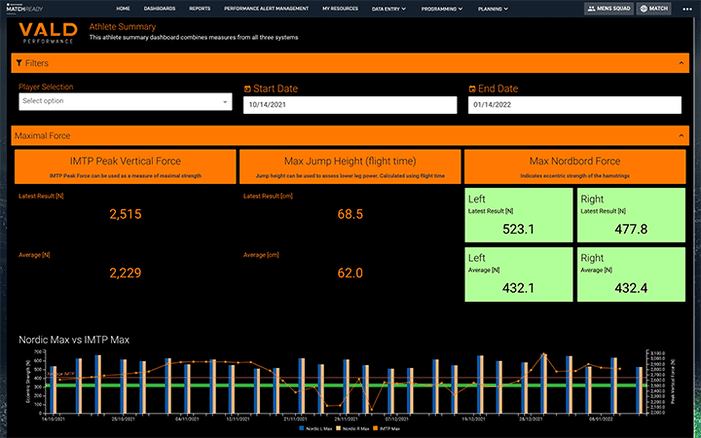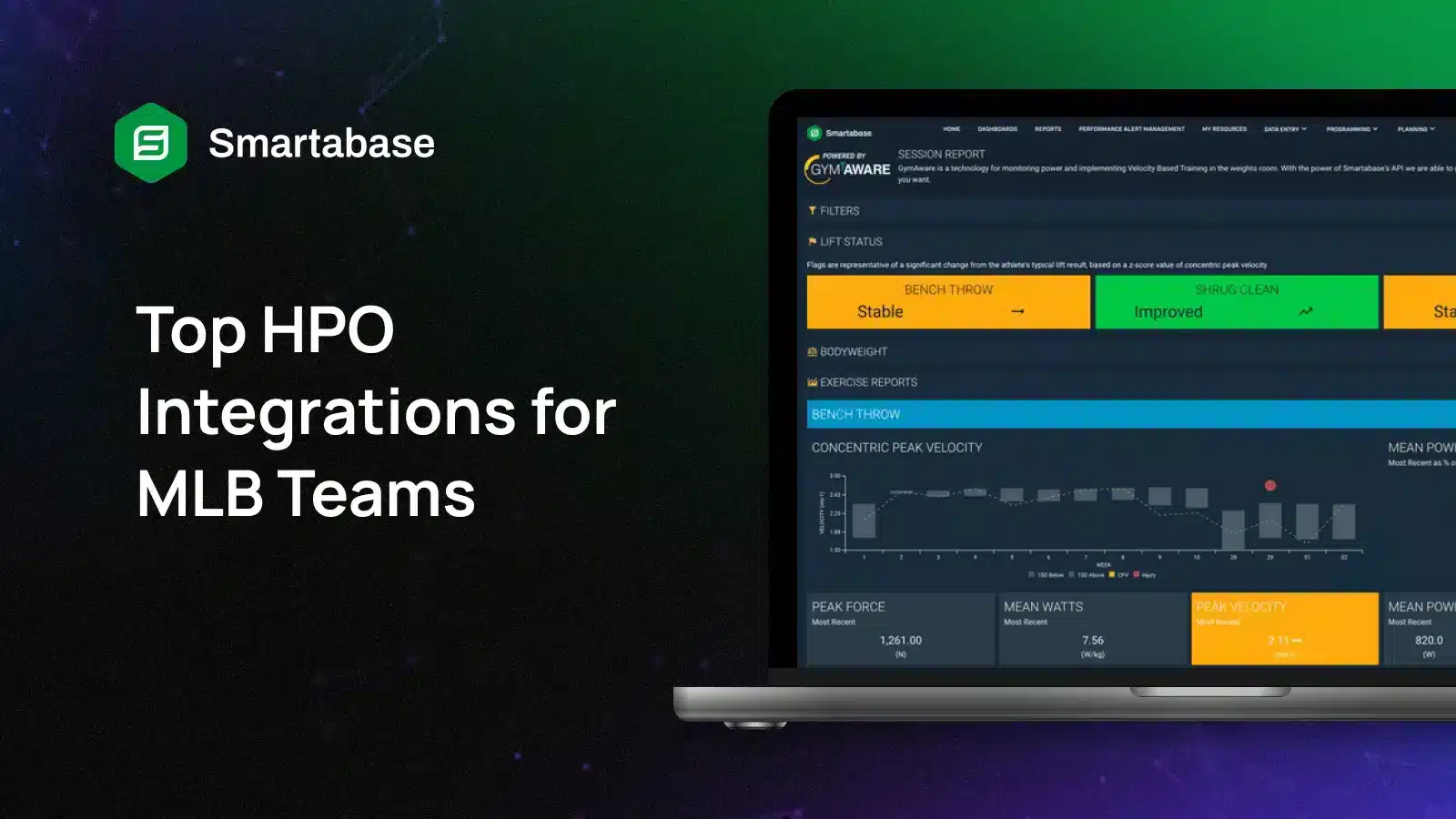MLB teams are finding new competitive advantages through the collection, interpretation, and application of human performance data. This becomes even more potent when devices and other inputs are integrated into a human performance platform like Smartabase.
Workload Monitoring and Technique Training
Technology: TrackMan, Diamond Kinetics, and Rapsodo
Systems like TrackMan, Diamond Kinetics, and Rapsodo enable the performance team to keep tabs on players overall workload and the volume, intensity, and density of each session to ensure that theyre not becoming overloaded.
TrackMan also allows teams to gather many data points about each pitch, such as the spin, break, release height, trajectory, and the strike zone where its landing. With Trackman, a staff member can keep count of how many pitches the pitcher throws in warmups and then at game speed, and what type of pitches they are.
Rapsodo can track pitches, too, and is very useful for assessing hitting in a cage or tunnel. Rapsodo shows 3D ball flight and landing location so players know where each hit wouldve ended up on a real field. The system measures exit velocity and launch angles off the bat.
Diamond Kinetics SwingTracker is a versatile swing analysis tool that can be utilized by placing a sensor on the knob of a players own bat or via the companys Smart Bat. It provides a 3D swing plane and path that can be synched with session metrics for an even more advanced analysis. Diamond Kinetics PitchTracker offers a similar system via a sensor embedded in a smart baseball. The system captures ball velocity and spin rate, direction, efficiency, and six other metrics. It also displays the pitch delivery duration and the time to plate.
Strength and Power Profiling and Development
Technologies: VALD, Hawkin Dynamics, and GymAware
Its advantageous for MLB teams to create a physical profile for each player in Smartabase that includes strength and power benchmarks. They use force plates from VALD or Hawkin Dynamics to assess lower body power in jump tests. When first coming into spring training, the results help set baselines for the rest of the season that the strength and conditioning (S&C) coach can use to inform programming. Metrics include vertical jump height, eccentric and concentric force production, and ground contact time for repeated jumps.
Once benchmark metrics have been collected for every player, they incorporate strength and power work into their gym training. GymAware provides velocity and speed targets for each exercise to help ensure that players are making the most of each rep and set, and can be overlaid with weekly force plate testing data in Smartabase to offer more complete monitoring of strength and power. Such regular assessments also enable staff to flag a player if their output drops too far below their usual standards and provide a conversation starter when intervention is needed.

Physical Screening/Injury Monitoring
Technology: VALD and KangaTech
Another kind of testing thats really valuable for MLB teams is physical screening and injury monitoring. With todays technology, its easy to assess just about any part of the body and a wide range of movement patterns, but two of the joints that are of greatest interest to the performance staff and medical practitioners are the shoulders and hips, as these bear the brunt of a lot of force production and absorption in baseball.
Systems like VALDs ForceFrame and KangaTechs KT360 evaluate neuromuscular strength, control, and endurance in the muscles surrounding these joints. Athletic trainers, physical therapists, and strength and conditioning coaches can also use them to evaluate players mobility and range of motion to complement manual testing and screens such as the FMS.
Coming off the bases fast is a common way for a player to strain a hip adductor or hamstring, both of which can become lingering issues. Using the ForceFrame or KT360 to evaluate the hips and VALDs NordBord to do the same for the hamstrings ensures players have sufficient strength and resiliency in this muscle group to withstand such in-game forces. These platforms can also measure bilateral motion, as players have to be able to turn and sprint in multiple directions.

Motion Capture
Technology: DARI Motion and 4D Motion
More baseball teams than ever before are using motion capture to assess players biomechanics. The 4D Motion systems allow the performance team to record three-dimensional movement using a series of small sensors placed on the individuals body, while DARI Motion does the same with a markerless system meaning theres no hardware on the player during the analysis. Both are used to assess baseball-specific motions such as swing plane and bat path for batting and pitching mechanics.
From a biomechanical standpoint, motion capture also helps athletic trainers, S&C coaches, and other staff evaluate joint mobility and alignment, kinematic chain sequencing, and injury risk. In addition to tracking baseball-specific movements, DARI Motion and 4D Motion can assess jumping, running, and other athletic movements to see if a player has the potential to get faster or more powerful just by altering their mechanics. When someone is returning from Tommy John surgery or struggling with thoracic outlet syndrome, motion capture can detail how their mechanics have been affected by comparing current video footage and stats to previous analyses. This discovery process gives coaches and medical practitioners the chance to work with players on dysfunctional movement patterns, overcorrections, favoring the non-injured side, and so on.
Smartabase Integrations
The Smartabase human performance platform serves as the central hub for all your performance, health, and medical data. Learn more about all the available integrations.





